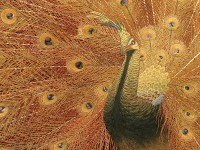Threads of Silk and Gold: Ornamental Textiles from Meiji Japan
(from 9th Nov 2012 until 27th Jan 2013)Discover exquisite embroideries, dyed silk and velvet panels, tapestries, and appliqué works

- This is a visual browsing tool that maps objects in this publication, gallery or collection trail by date of creation onto a timeline.
- The circular markers indicate where objects are on the timeline.
- The size of the markers indicates the relative number of objects at that point on the timeline.
- Hover over a marker to find out which objects are represented at that point in time.
- To expand, collapse or hide the timeline, click these symbols
 found at the top right of the timeline.
found at the top right of the timeline.
- 1850
- 1860
- 1870
- 1880
- 1890
- 1900
- 1910
- 1920
At the international exhibitions of the 1870s the Japanese first became aware of the Western notion of a division between the ‘fine’ and ‘decorative’ arts. The concept that the fine arts, and painting in particular, were superior to the applied arts was unfamiliar to Japanese artists and artisans.
Many Japanese makers and merchants believed that their goods would sell better if they were regarded as ‘fine art’. The producers of ornamental textiles created painterly designs in formats such as wall hangings, screens and framed panels that were designed to be displayed as works of art. Motifs and compositions were often drawn from pictorial sources such as Nihonga ‘Japanese-style painting’, oil painting, photography and lithography.
Notice
Objects from past exhibitions may have now returned to our stores or a lender. Click into an individual object record to confirm whether or not an object is currently on display. Our object location data is usually updated on a monthly basis, so please contact the Jameel Study Centre if you are planning to visit the museum to see a particular Eastern Art object.
© 2013 University of Oxford - Ashmolean Museum

